The Mist (2007): The Most Brutal Ending in Horror?
“There should be a law passed stating that anybody who reveals the last 5 minutes of this film should be hung from their neck until dead.”
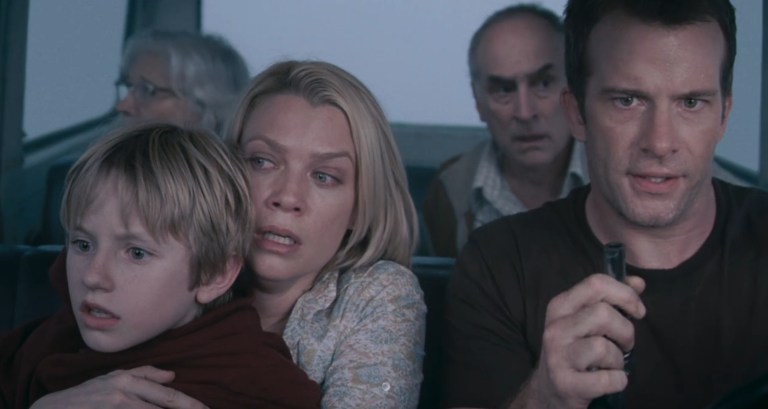
The Mist (2007) is a science-fiction horror movie based on a Stephen King novella. The movie is remembered for writer/director Frank Darabont changing King’s ending to a much darker version and for his casting many actors that he hired again when developing and executive-producing the first season of The Walking Dead in 2010.
The film tells the story of a small coastal town in Maine beset by a thick fog the morning after a severe thunderstorm. Local artist David Drayton takes his eight-year-old son Billy with him to the supermarket to buy supplies. When the mist reaches town, residents realize it is sinister. The store is closed down while a large group of people, including David and Billy, are still inside. The terror gets amped up when a Lovecraftian monster appears and violently captures a grocery store employee who was trying to repair the store’s emergency generator. The townspeople trapped in the supermarket turn against each other, and David learns what’s inside (each other) is just as dangerous as what’s outside (literal monsters).

In the novella, The Mist concludes ambiguously with David, Billy, and Amanda driving off through New England, unsure where (or if) they will find safety. In the film, David, Billy, Amanda, Irene, and Dan reach David’s car and attempt to drive to safety. After they went to David’s house and found his wife dead, their car runs out of gas. The group decides that suicide is a better option than facing the monsters of the mist. David uses their last four bullets to shoot his son, Amanda, Irene, and Dan but does not have enough bullets to kill himself. When David exits the vehicle, traumatized and ready to die, he is floored to discover the mist dissipating and the army rolling in. He stands speechless as he sees survivors who had been at the store (like Melissa McBride’s character) safely being escorted away, and he realizes that if they had waited only a few more minutes, his son would have been rescued.
This suicide pact ending is briefly considered by David’s character in the novel and Darabont expanded it into one of the most brutal endings in horror history. Here are the most interesting facts about the making of The Mist (2007):
Frank Darabont, president of the Stephen King fan club

• Frank Darabont wanted to make a film version of The Mist as soon as he read it in Stephen King’s Dark Forces anthology. Instead, he first directed three other Stephen King adaptations: The Woman in the Room (1983), The Shawshank Redemption (1994), and The Green Mile (1999).
• Darabont was able to make The Woman in the Room because Stephen King allows aspiring filmmakers to produce adaptations for the price of $1. Known as Dollar Babies, these productions began in 1977 when King says he “saw a way to give back a little of the joy the movies had given me.”
77 was the year young film makers – college students, for the most part – started writing me about the stories I’d published (first in Night Shift, later in Skeleton Crew), wanting to make short films out of them. Over the objections of my accountant, who saw all sorts of possible legal problems, I established a policy which still holds today. I will grant any student filmmaker the right to make a movie out of any short story I have written (not the novels, that would be ridiculous), so long as the film rights are still mine to assign. I ask them to sign a paper promising that no resulting film will be exhibited commercially without approval, and that they send me a videotape of the finished work. For this one-time right I ask a dollar. I have made the dollar-deal, as I call it, over my accountant’s moans and head-clutching protests sixteen or seventeen times as of this writing.
Stephen King, The Shawshank Redemption: The Shooting Script
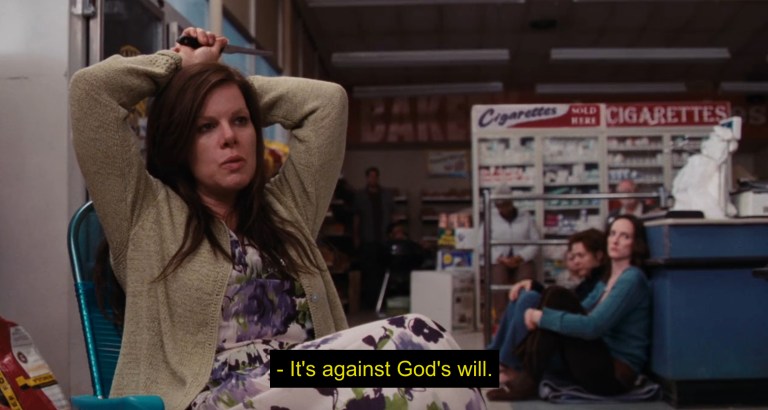
• While Darabont’s first two Stephen King features earned him multiple Academy Award nominations, The Mist didn’t receive any. However, King said the movie actually scared him, which Darabont considered a career highlight.
• David calls his son “Big Bill,” a reference to Bill Denbrough in It.
• Darabont had a cameo as a ghost in Stephen King’s 1997 The Shining miniseries.
• Darabont offered King a role in the movie, but King didn’t want to leave Maine to film. The role was a biker, who wound up being played by Brian Libby.
• In King’s version, David Drayton and Amanda Dumfries are both married to other people, but have an affair during the events of the story. Darabont thought this would be too confusing to show and instead we see David and Amanda emotionally connecting, but not cheating on their spouses.
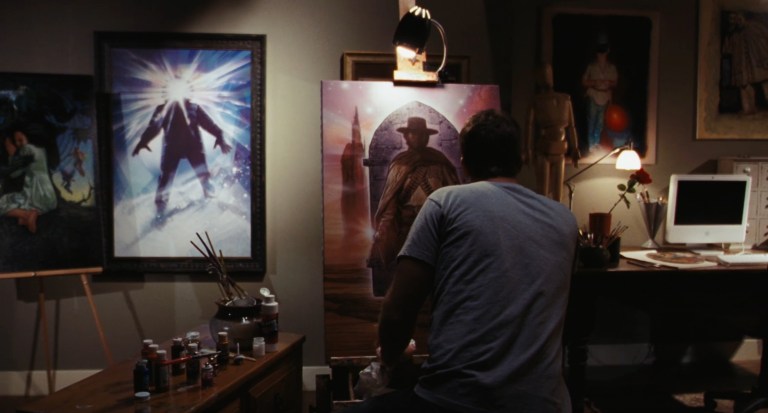
• When we first meet David Drayton, he is in his studio working on a painting which is later destroyed in the storm. The painting was depicting Roland from Stephen King’s Dark Tower series.
• One grocery store survivor is reading a newspaper called “The Castle Rock Times,” another King reference.
Connections to ‘The Walking Dead’
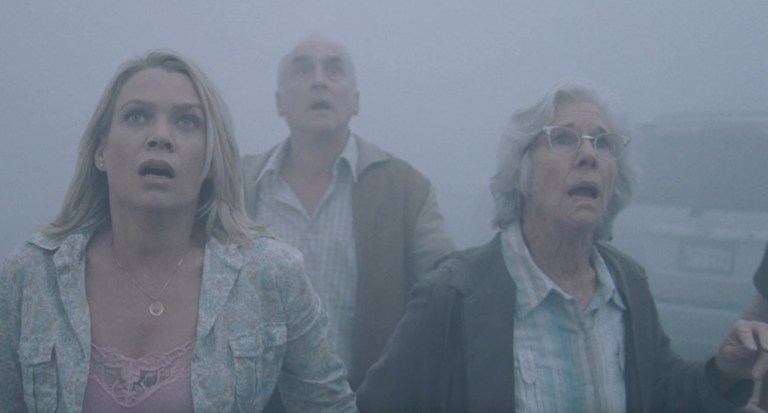
• Future The Walking Dead collaborator Greg Nicotero worked on special effects for the movie. The two met when Darabont asked Guillermo del Toro who helped him create the incredible effects in Pan’s Labyrinth (2007). Together with Everett Burrell, the three created the look of the film’s monsters.
• The Mist actors that would later appear on The Walking Dead (Darabont adapted the series to TV and was the first season’s showrunner) include: Jeffrey DeMunn (Dan Miller/Dale Horvath), Melissa McBride (Woman with Kids at Home/Carol Peletier), Laurie Holden (Amanda Dumfries/Andrea), Juan Gabriel Pareja (Morales), Sam Witwer (Private Jessup/military corpse in the tank Rick Grimes crawls into in Atlanta), and Tiffany Morgan (Woman #2/Erin).
• The film’s star, Thomas Jane, was cast as Rick Grimes in The Walking Dead when it was pitched to HBO, but the network passed and the role would later go to Andrew Lincoln.
• Juan Gabriel Pareja’s plays a character named “Morales” in both The Mist and The Walking Dead.
Behind the scenes
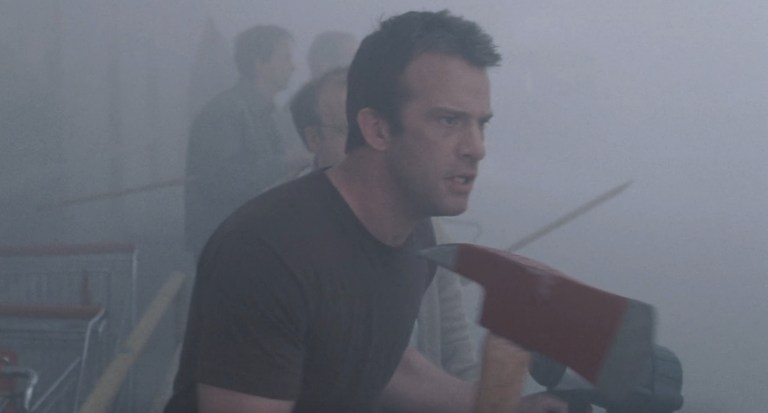
• Setting himself apart from the “torture porn” that was popular in mid-00s horror, the scares in Darabont’s story come from Lovecraftian monsters and the church lady next door. He took inspiration from the Hitchcock survival movie Lifeboat (1944) and the Twilight Zone episode “The Monsters Are Due on Maple Street.”
The story is less about the monsters outside than about the monsters inside, the people you’re stuck with, your friends and neighbors breaking under the strain.
Frank Darabont, A Bad Day at the Market
• William Sadler plays Jim in this adaptation but he also voiced the lead, David, in the audio production.
• Like It Follows (2015), The Mist doesn’t take place in a specific time period. Characters had nondescript cellphones, cars were from the late 80s, and police wore old uniforms. Darabont scattered cultural references to stop The Mist from feeling like a period film.
• When Thomas Jane’s character is shown picking up a comic for his eight-year-old son, he selects Hellboy even though Jane actually played the title character in The Punisher (2004). This is because Jane didn’t like the producers and passed on returning for the film’s sequel.
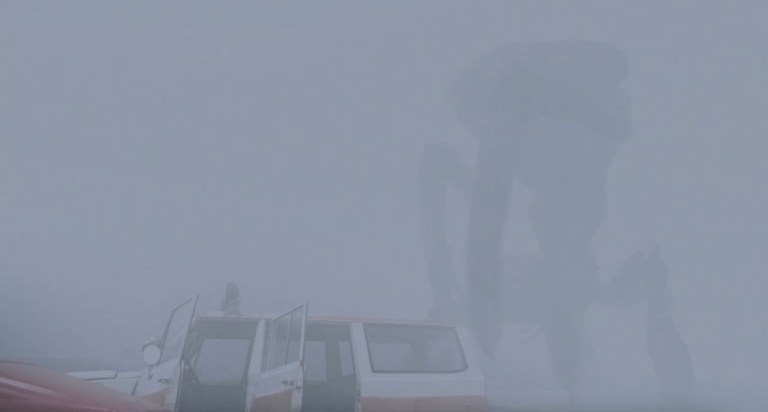
• Even though the film was shot entirely in Shreveport, Louisiana, Stephen King said the final product looked like it was shot in Maine.
• Some of the visual effects of the monsters attacking the store were created by throwing baseballs at the glass and then digitally removing them to only show the impact and shattered glass.
• One of Darabont’s inspirations was Night of the Living Dead (1968), and he considers the true version of The Mist to be his black-and-white print released in 2008.
• The special-effects team created working flamethrowers entirely from parts they could find at Home Depot.
The shocking ending
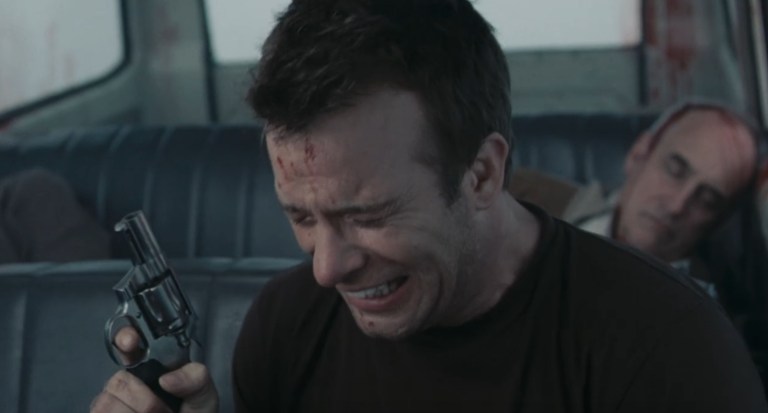
• When he inked a deal with Dimension films, Darabont included in the contract that no one could change the scripted ending, which he had written and changed from King’s original ending to a much more gruesome and upsetting one. This came after he had to turn down a $30-million offer to finance the movie if he would change the ending. In order to take the Dimension deal and make the film with the ending he wrote, Darabont gave up his salary.
Frank [Darabont] wrote a new ending that I loved. It is the most shocking ending ever and there should be a law passed stating that anybody who reveals the last 5 minutes of this film should be hung from their neck until dead.
Stephen King, The Mist Ending Explained: 14 Years Later, The Ending Still Hits Like A Gunshot
• Melissa McBride’s character was supposed to die, and her corpse would be briefly glimpsed at the end. However, everyone loved McBride’s acting so it was decided that both her character and her character’s children would survive and be shown unharmed. The idea of her survival was first pitched by her future Walking Dead costar Jeffrey DeMunn.
• There are a few different theories about what the film’s ending means. Some think that Mrs. Carmody was right, and killing Billy and Amanda brought about the end of the mist. Others think that it wasn’t Billy and Amanda specifically but the blood sacrifices in general that appeased the monsters and led to the mist dissipating. It could also be that David is just the unluckiest man on Earth and it was all a coincidence.
He read it and said, ‘Oh, I love this ending. I wish I’d thought of it.’ He said that, once a generation, a movie should come along that just really pisses the audience off and flips their expectations of a happy ending right on the head. He pointed to the original ‘Night Of The Living Dead’ as one of those endings that just scarred you. And it felt OK to me! On balance, it seems like, thematically, it’s a pretty good companion piece to ‘Shawshank,’ in a weird way. Because if ‘Shawshank’ is the movie about the value of hope, then ‘The Mist’ becomes a movie about the danger of hopelessness. And believe me, I knew that it was going to be one of those endings that people either really dug, or really hated. I was OK with that, because I think that at the end of the day, we should be willing to go either direction. It shouldn’t always be about making the audience love you and about pandering to their approval.
Frank Darabont, The Mist Ending Explained: 14 Years Later, The Ending Still Hits Like A Gunshot
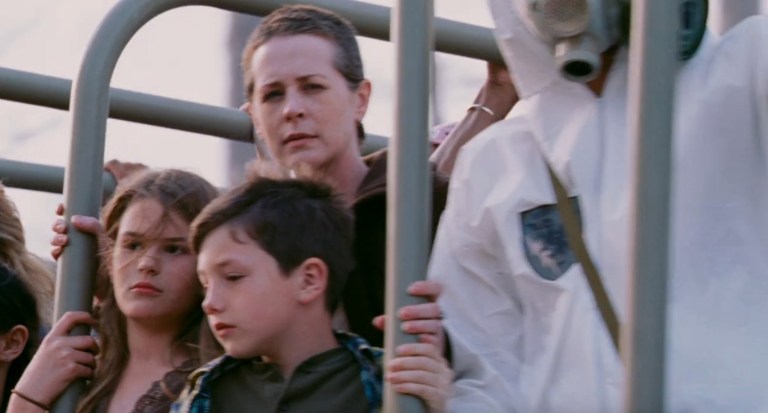
• Five years after the release of The Mist, Frank Darabont and Bob Weinstein collaborated on another adaptation of the same story, this time as a miniseries and the show aired on Spike in 2017.
